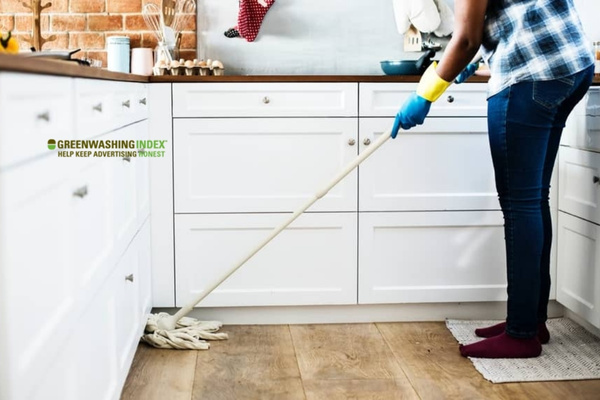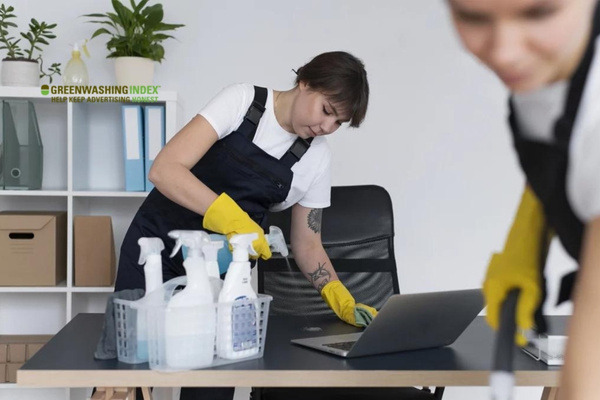

Have you ever thought about what’s lurking in the air of your home? You know, the stuff you can’t see but could harm you and your loved ones? Well, those invisible threats are often volatile organic compounds or VOCs.
They sneak into our homes without a knock on the door or a ring of the bell. I’m here to pull back the curtain on these sneaky invaders to help keep your sanctuary safe and clean.
Understanding VOCs is crucial for keeping our homes and the environment safe. Simply put, they’re chemicals that easily turn into gases at room temperature. We find them in everyday items like paints, cleaning supplies, and even furniture.
These compounds can escape into our indoor air and sometimes join forces with outdoor pollution to create bigger problems
When I think of Volatile Organic Compounds or VOCs, I picture them as tiny culprits that can hide in many everyday products around us. VOCs definition is simple: they are chemicals that vaporize at room temperature and can be harmful to both our health and the environment.

Many common items in our homes, like paints, cleaning supplies, and even some cosmetics, release these compounds into the air we breathe. The science behind how VOCs affect us may sound complex, but it’s important to understand why they matter.
To get a clear idea of what VOCs are about, let’s break down what Volatile Organic Compounds actually stand for:
So when we talk about Volatile Organic Compounds, we’re talking about a wide range of chemicals that have these properties and can be found indoors and outdoors. You may have come across them when you smell the fresh paint on walls or the scent of cleaning products.
Some well-known examples include:
And where do they come from? Well, here are a few everyday VOC sources:
Understanding how VOC emissions work starts with acknowledging that air isn’t just empty space – it’s a fluid filled with small particles like dust, pollen, and yes—Volatile Organic Compounds. These sneaky particles emit from various sources without us seeing them.
Here’s how indoor air quality gets hit by VOC emissions:
This differs quite a bit from outdoor pollution because while both indoor and outdoor environments contain Volatile Organic Compounds:
Being clued up on what Volatile Organic Compounds are is crucial for ensuring not just my home but also my local environment is safer because clean air isn’t something visible I can protect—it needs my understanding first so I can then reduce sources of pollutants wisely within my control.
Also Read: Compost Flies Uncovered: Solve Your Organic Waste Riddle!
Volatile Organic Compounds, or VOCs, are very common in our homes. We may not see them, but they’re often there. So what exactly are they? In simple words, VOCs are chemicals that can easily turn into gases at room temperature.

At home, we have many different things that can give off VOCs. Understanding where these chemicals come from helps us control them better and keep our indoor air clean. Here is a list of products or materials in homes that might emit VOCs:
Did you know even printers and copiers at home could add to the amount of volatile organic compounds in our indoor space? It’s quite surprising how many everyday items could be affecting the air quality around us.
Sometimes you might wonder if there are high levels of indoor VOCs in your house. How do you figure it out? Here’s some advice on identifying signs:
It’s crucial we pay attention to these signs because long-term exposure to high levels could affect our health.
Using common sense helps too: If it smells very strong and artificial, I would guess it likely has lots of chemicals that will turn into gases (VOCs) floating around after use.
Caring about our indoor air is part of keeping ourselves healthy – just as much as diet or exercise! Plus by controlling volatile organic compounds inside our homes, we help protect nature outside too – making sure there’s less pollution going back into the environment from within our little havens.
Also Read: Maggots in Compost: Why They’re Actually Good!
When I talk about Volatile Organic Compounds or VOCs, I am speaking of certain chemicals. These are around us in the air we breathe, often coming from everyday items. It’s important to know they can be harmful because they may affect our health in bad ways.

Right after someone breathes in VOCs, their body might react immediately or within a few hours. Here’s what could happen:
All these signs tell us that being around too many VOCs isn’t good for anyone.
What if someone keeps being around VOCs for a long time? Well, it’s not great news either. Here are some scary things that might happen:
These issues don’t show up right away but think about them like a slow poison. Over many days and years, little by little, my health could take serious hits from breathing in those harmful air bits called Volatile Organic Compounds.
Understanding these risks helps me remember why I need to keep my home safe from too many VOCs – for my family’s wellness now and for years ahead.
Also Read: Cotton Biodegradability: Eco-Friendly or Ecological Burden?
When it comes to keeping my home safe and healthy, I know how important it is to pay attention to the air we breathe. That’s why I want to talk about Volatile Organic Compounds, or VOCs for short.
These are chemicals that can escape into the air from many everyday items. They could be bad for our health and our environment. So, let’s look at some simple steps we can take to get fewer VOCs in the air in our homes.
To reduce indoor levels of Volatile Organic Compounds, here’s what I do:
Following these steps helps make sure I am doing what I can to keep levels of volatile organic compounds low inside my home.
Now let’s talk technology! Here are some modern ways I use to manage air quality:
By using these advanced methods along with those practical tips, managing Volatile Organic Compounds becomes much simpler — protecting both my health and our precious environment!
Also Read: Compost Bugs: Deciphering the Good from the Bad
Volatile Organic Compounds, or VOCs, are a kind of chemical that turns into gas at room temperature. This might sound technical, but it’s actually about stuff that can evaporate easily and get into the air we breathe. Think about the smell of a fresh coat of paint or the scent when you peel an orange; those are examples of VOCs getting into the air.
Outdoor emissions from these compounds impact air quality in a big way. They can travel far from their source and end up changing the quality of air in places they reach. This can affect not just one area, but many parts all over our planet.
When all these sources add up together, they seriously hurt global environmental health.
Now let’s dig deeper into how emitted Volatile Organic Compounds mess with our climate and cause smog:
By understanding what creates high levels of outdoor VOC emissions and recognizing their role in climate change and smog production, each person becomes more aware of why it’s so important to control what we put into our shared environment for our collective safety—and also for protecting nature which has no voice but suffers silently under such man-made pressures.
As someone who deeply cares about the environment, I am always looking for ways to promote a healthy world. Volatile Organic Compounds, or VOCs, are everywhere and they affect both our health and the environment. So, it’s important for me to share what I know about using products that keep these compounds in check.
When selecting products that limit emissions of VOCs into our homes and planet, here are some steps I follow:
By sticking with these guidelines when buying home improvement items or cleaning supplies, we can reduce our contribution to the harmful effects caused by high levels of volatile organic compounds.
Here’s how we can take steps as a community to address the problem:
When groups of people come together focused on one goal – in this case cutting down high Volatile Organic Compound emission rates – it fosters broader progress toward improving overall indoor air quality as well as environmental safety at large.
Volatile organic compounds, or VOCs, are chemicals that easily turn into a gas at room temperature. They’re found in many everyday items like paints and cleaners.
Breathing in volatile organic compounds can cause health problems such as headaches, dizziness, or worse over time. Some may even harm your liver, kidneys, or brain if you’re exposed for too long.
Yes, you can cut down on VOCs at home. Use products with low VOC content and keep your space well-ventilated when using chemicals or products that might release these compounds.
There’s no clear “safe” level since sensitivity to VOCs varies from person to person. The key is to reduce your exposure as much as possible for better indoor air quality and environmental safety.
Throughout my exploration of Volatile Organic Compounds (VOCs), I’ve delved deep into their nature, sources, and the risks they pose. Recognizing the presence of VOCs in our homes and environment has moved me to action, showing how critical it is to safeguard our indoor spaces and the air we breathe.
The health impacts from VOC exposure—both short-term irritations and long-term conditions—underscore the urgency for awareness and preventive measures. By adopting simple strategies, such as being selective about household products, improving ventilation, or using air purifiers, we can significantly reduce our indoor VOC levels.
On a broader scale, understanding VOCs’ role in environmental challenges like smog formation and climate change illuminates the importance of community action against high-VOC substances.
Using low-VOC products not only benefits individual households but also contributes to reducing global emission rates. The collective effort towards eco-friendliness can lead to a healthier planet.
